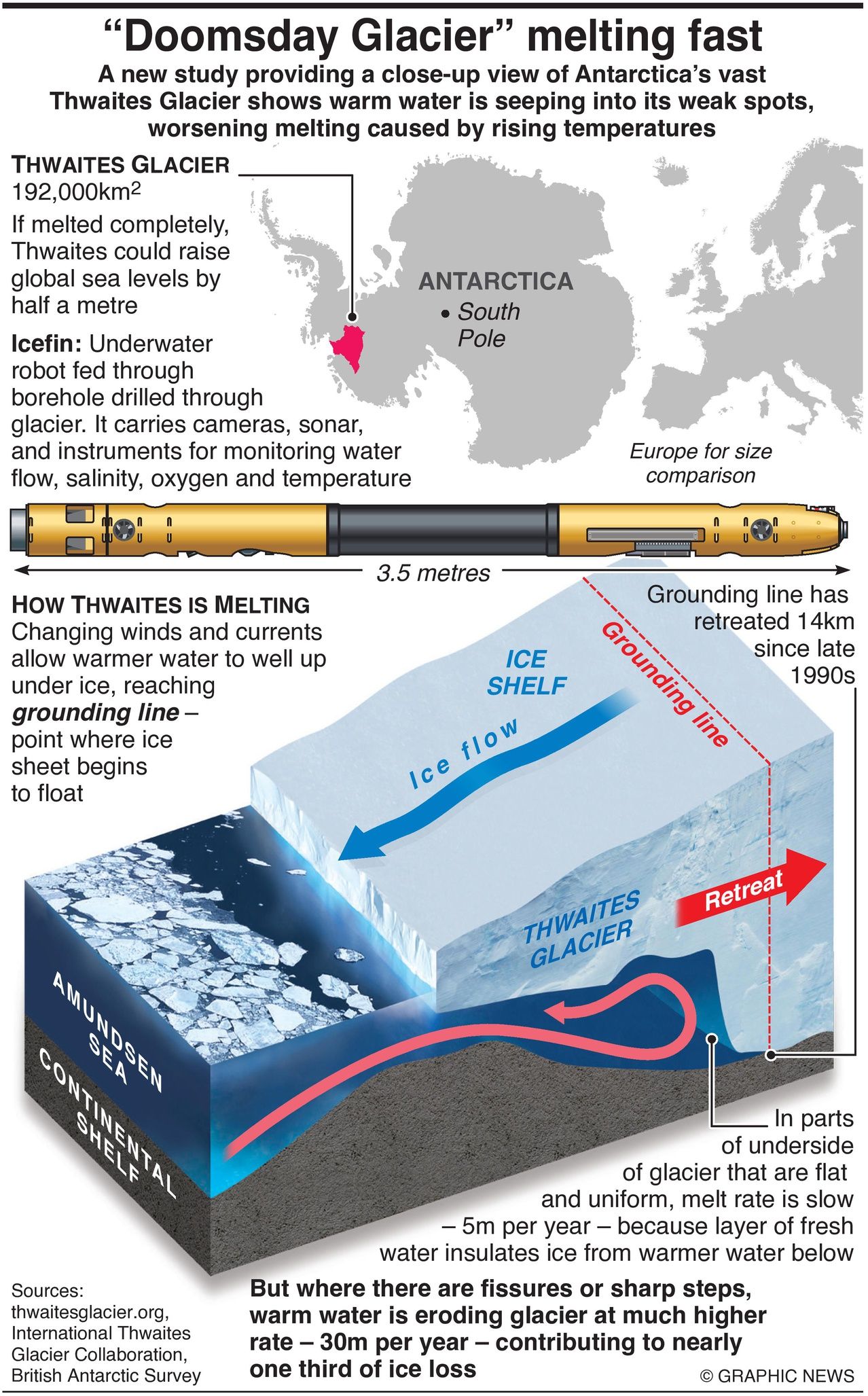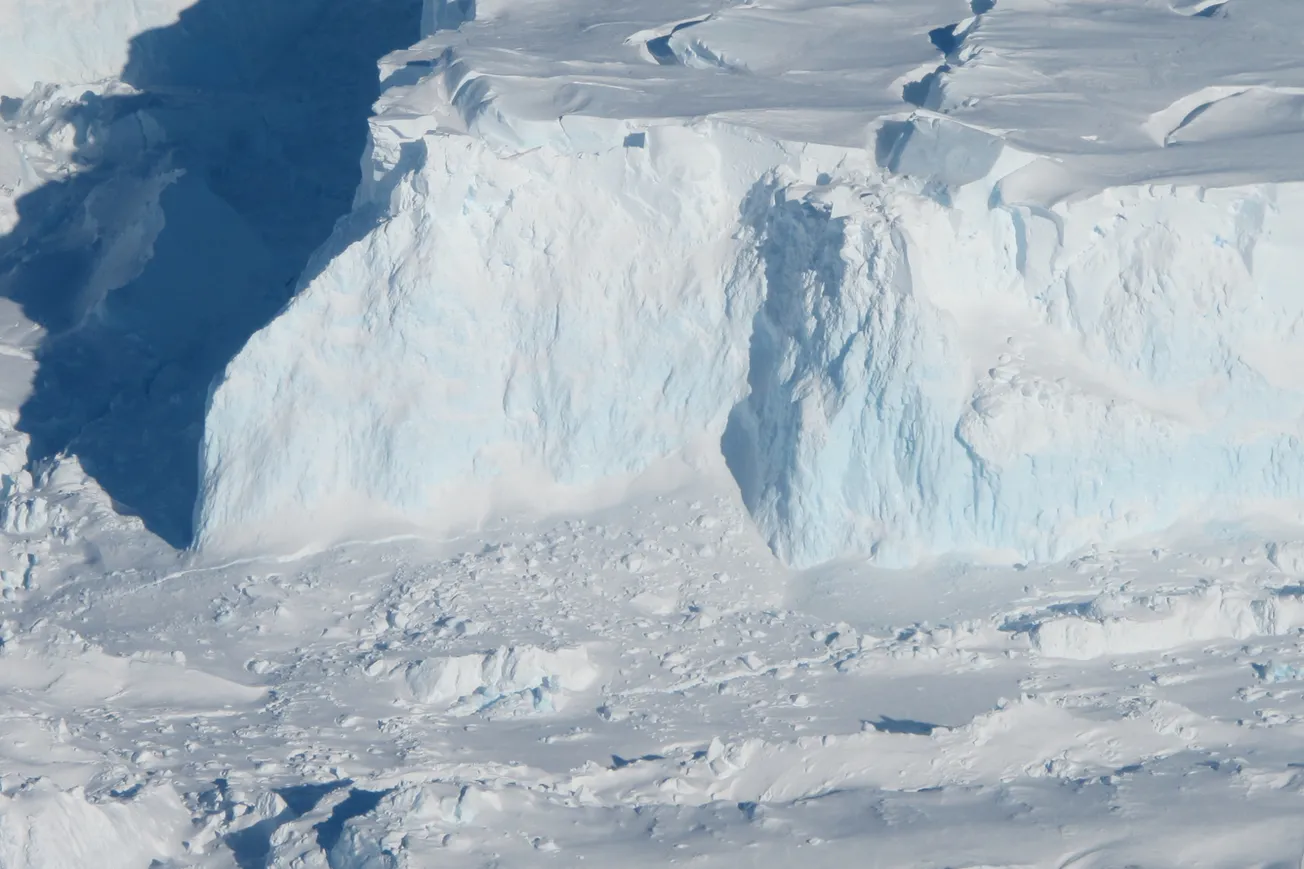A new study providing a close-up view of Antarctica’s vast Thwaites Glacier shows warm water is seeping into its weak spots, worsening melting caused by rising temperatures.

The results from overlapping teams of more than two dozen scientists, published in two papers in the journal Nature, reveal the extent to which human-caused warming could destabilize glaciers in West Antarctica that could ultimately raise global sea level by three meters if they disintegrate over the coming centuries.
As part of the International Thwaites Glacier collaboration – the biggest field campaign ever attempted in Antarctica – a team of 13 U.S. and British scientists spent about six weeks on the glacier in late 2019 and early 2020.
Using an underwater robot vehicle known as Icefin, mooring data, and sensors, they monitored the glacier's grounding line, where ice slides off the glacier and meets the ocean for the first time.
The biggest revelation was that the ice melt is uneven, with relatively slow loss in flat areas on the glacier’s underside.
In parts of the underside of the glacier that are flat and uniform, the melt rate is slow – 5m per year – because a layer of fresh water insulates the ice from the warmer water below.
But where there are fissures or sharp steps, the warm water erodes the glacier at a much higher rate – 30m per year – contributing to nearly one-third of ice loss.









